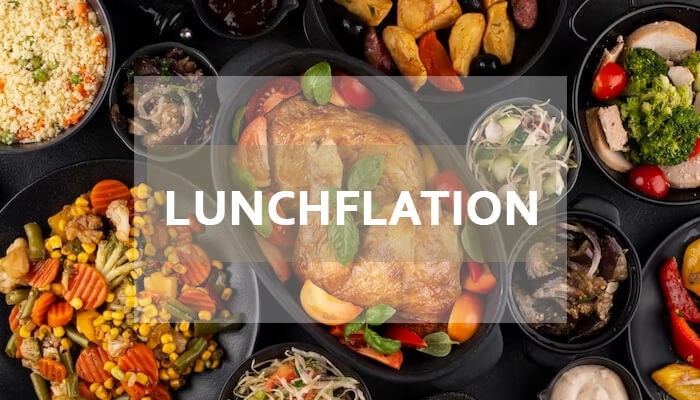“Lunchflation,” which refers to the phenomenon of rising prices for lunch items, can be a challenge for restaurateurs. To combat the impact of rising prices while maintaining customer satisfaction and profitability, consider implementing these strategies:
Supplier negotiation
Supplier negotiation is a crucial strategy for combating lunchflation.Building strong relationships with your suppliers and negotiating effectively can significantly impact your ability to manage costs during periods of rising prices. Here’s how to approach supplier negotiation:
Maintain transparent and open communication with your suppliers. Keep them informed about your challenges due to rising costs and ask for their understanding.
Negotiate bulk purchasing discounts based on the quantities you order. Highlight the potential for increased business as an incentive for them to offer better prices. Discuss flexible payment terms that align with your cash flow. Extended payment periods or staggered payments can help you manage your finances more effectively.
Request price guarantees for a specific period. This can provide you with stability and protection against sudden price increases.
Research and identify alternative suppliers. Mention your intention to explore other options if the current supplier cannot provide competitive prices. Stay informed about market trends and the prices offered by other suppliers. Use this information to negotiate better terms with your existing supplier.
Approach negotiation as a collaborative effort rather than an adversarial one. Understand their challenges as well, and work together to find mutually beneficial solutions. Highlight the value your business brings to their brand, and vice versa. For instance, you could offer to promote their products prominently on your menu or marketing materials in exchange for better pricing.
Price segmentation
Price segmentation is another effective strategy that restaurateurs can employ to combat rising prices. It involves categorizing your menu items into different price tiers or segments based on various factors. This strategy allows you to offer a range of options to cater to different customer preferences and spending capacities. It empowers you to offer a diverse range of options while catering to various customer segments. It also allows you to mitigate the impact of lunchflation by offering choices at different price points, ensuring that customers can find something that fits their budget while maintaining profitability for your restaurant.
Price segmentation involves organizing your menu items into different tiers or segments with varying price points. This approach allows you to cater to a diverse range of customer preferences while managing the impact of rising costs.
Ensure that each tier offers perceived value commensurate with the price. Items in higher tiers should have unique features, premium ingredients, or larger portions that justify the increased cost.
Strategically allocate expensive ingredients to higher-priced tiers, while using more cost-effective ingredients in lower-priced options. This helps you manage the impact of rising costs without compromising quality.
Introduce signature dishes that showcase your restaurant’s expertise and uniqueness. These items can command higher prices and contribute to the perception of value. Create bundle deals that combine items from different price tiers. This encourages customers to explore various parts of your menu and may lead them to opt for slightly pricier options.
Leverage on data analytics
Leveraging data analytics can be a powerful strategy for restaurateurs to make informed decisions on how to deal with rising costs.Use POS (Point of Sale) data to identify top-selling items, high-margin dishes, and underperforming options. This information can guide menu adjustments to focus on items that provide the best profitability.
Analyze historical sales data to understand demand patterns. This can help you anticipate busy periods, plan inventory more accurately, and prevent overordering. Determine the popularity of various menu items, their profitability, and customer preferences. Adjust your menu based on data insights to optimize revenue generation.
Analyze how changes in prices affect the demand for specific items. This can guide your pricing adjustments to minimize customer resistance while maintaining profitability.Segment your customer base based on demographics, preferences, and spending behavior. Tailor marketing efforts and menu offerings to cater to different segments effectively.
Implement data-driven inventory management systems to track ingredient usage, reduce waste, and ensure timely reordering to minimize holding costs.
Menu engineering
Regularly analyze your menu items’ profitability and popularity. Identify high-margin dishes that are also popular among customers.
Highlight these high-margin items using visual cues or placement on the menu to encourage more orders.
Find cost-effective substitutes for expensive ingredients without compromising on taste and quality. Maintain the essence of the dish while using more affordable alternatives.



